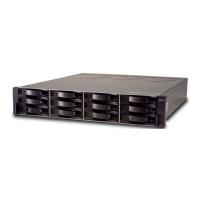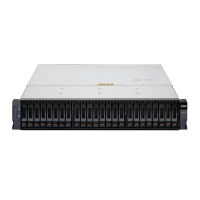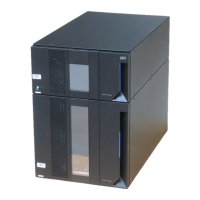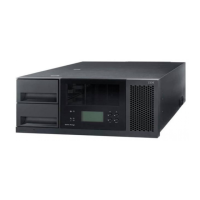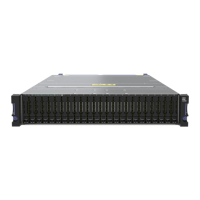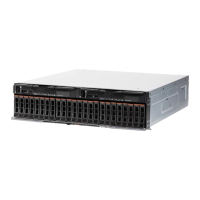Important: Do not change the speed of a drive loop while the storage subsystem
is powered on. Such a speed change will cause unpredictable results.
Also, the drive expansion enclosures must be power cycled for the new
speed setting to be correctly recognized.
If you need to change the speed of a drive loop, complete the following steps:
1. Prepare applications for storage system shutdown.
2. Shut down the storage system.
3. Shut down the storage expansion enclosures.
4. Change the storage expansion enclosure speed settings.
5. Power on the storage expansion enclosures.
6. Power on the storage subsystem.
7. Restore storage subsystem host application operations.
The Link Rate switch on the DS5020 storage subsystem and the storage expansion
enclosures connected to it must have the same setting.
Attention:
1. After you remove an E-DDM CRU, wait 70 seconds before replacing or
reseating the E-DDM CRU to allow it to properly spin down. Failure to do so
might cause undesired events.
2. Never hot-swap an E-DDM CRU when its associated green Activity LED is
flashing. Hot-swap an E-DDM CRU only when its associated amber Fault LED
lights is not flashing or when the E-DDM is inactive and its associated green
Activity LED lights is not flashing.
Note: If the E-DDM you want to remove is not in a failed or bypass state, always
use the Storage Manager client program either to place it in a failed state or
to place the array that is associated with the E-DDM (or E-DDMs) in an
offline state before you remove it from the enclosure.
Controllers
The DS5020 has two hot-swappable and redundant RAID controllers. The
controllers are located at the back of the storage subsystem. The left controller is
labeled controller A, and the right controller is labeled controller B. One controller
will continue to operate if the other controller fails.
The controllers contain the storage subsystem control logic, interface ports, and
LEDs. Depending on the DS5020 configuration you purchased, your controllers are
one of the following types:
v Controllers with 1 GB memory, two standard 8 Gbps FC host ports, and two
standard 4 Gbps FC drive channel ports
v Controllers with 1 GB memory, two standard 8 Gbps FC host ports, one optional
2-port 8 Gbps FC host card, and two standard 4 Gbps FC drive channel ports
v Controllers with 1 GB memory, two standard 8 Gbps FC host ports, one optional
2-port 1 GB iSCSI host card, and two standard 4 Gbps FC drive channel ports
v Controllers with 2 GB memory, two standard 8 Gbps FC host ports, and two
standard 4 Gbps FC drive channel ports
v Controllers with 2 GB memory, two standard 8 Gbps FC host ports, one optional
2-port 8 Gbps FC host card, and two standard 4 Gbps FC drive channel ports
v Controllers with 2 GB memory, two standard 8 Gbps FC host ports, one optional
2-port 1 GB iSCSI host card, and two standard 4 Gbps FC drive channel ports
Chapter 1. Introduction 9
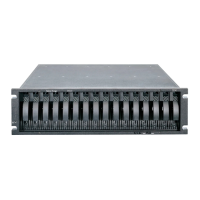
